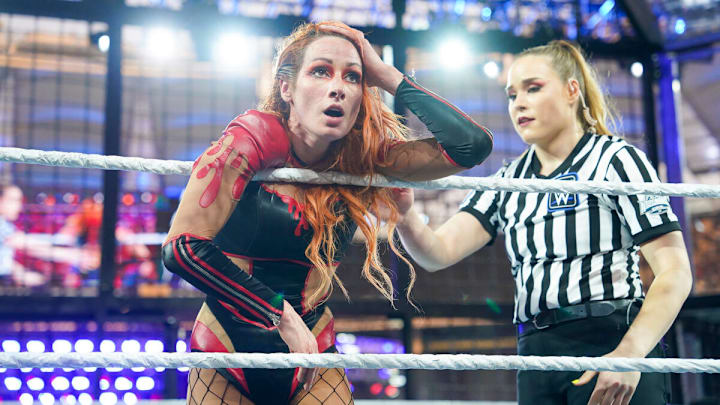Roughly a year ago, WWE's announcement of new secondary championships for the women was met with plenty of enthusiasm. The company hyped the introduction of these belts with their usual buzzwords about the "historic" occasion. As for the fans, a lot of them saw this as an avenue for more on-screen opportunities in an already-stellar women's division.
Of course, adding two new belts to WWE programming came with some concerns. For one, the women's midcard ranks aren't as deep as you think, given that the company is still somewhat adhering to the brand split. On top of that, this is a promotion that has struggled to present its champions effectively, and adding more of them often doesn't help.
Thus far, WWE has lived up (or down) to those expectations. While the women's Intercontinental and United States Championships have enjoyed some fun moments since their inception, both have succumbed to the stale booking that has plagued WWE television for the last year or so.
What has WWE gotten right and wrong with the women's secondary championships?
At the outset, things looked promising, even with some warning signs. The company held respective tournaments to crown inaugural champions. Ultimately, Chelsea Green won the U.S. Title, followed by Lyra Valkyria earning the Intercontinental belt a month later. Valkyria's ascent to the IC Title made plenty of sense; she is a good worker, and WWE seemed committed to getting her over.
Going with Green as the U.S. Champion was a more curious choice. After all, this is someone who has spent most of this stint with WWE as an enhancement talent and is far from the first person you would call to provide good matches on a semi-regular basis. It didn't help that WWE used her maiden reign to continue a feud with Mia Yim that, while it exceeded expectations, lasted far past its sell-by date.
Regardless, Green made the most of her newfound push through her outstanding character work and chemistry with Secret HER-vice stablemates Alba Fyre and Piper Niven. It also served as an effective contrast to Valkyria's by-the-book fighting babyface champion schtick.
Speaking of, Valkyria's efforts through regular defenses in good matches established a solid starting point for the I.C. Title. There was more reason for optimism when she began a feud with Becky Lynch over the title after WrestleMania 41, but unfortunately, this is where things go south.
Despite a strong start, the Valkyria/Lynch program succumbed to creative meddling that resulted in an underwhelming conclusion at SummerSlam. With Lynch now the champion and working as a heel, the defenses have gone down, along with the quality of the matches.
In fairness, matches against Maxxine Dupri and a part-time Nikki Bella won't have high expectations. Plus, a less-active reign is what you'd expect following a "take on all comers" babyface run (and it plays into Lynch's "I hold everyone down" gimmick). However, it illustrates how thin the roster is in terms of credible wrestlers who aren't the top stars.
The U.S. Title has fared worse. After Green surprisingly lost the belt to Zelina Vega (a babyface who, at the time, had the momentum of a stalled car in a snowstorm), it slowly became an afterthought. That trend continued when Guilia took over as champion two months later.
With Guilia -- a great worker who was coming off a solid run in NXT -- WWE had a chance to showcase her in-ring prowess to the main roster audience via some compelling matches against various challengers. Unfortunately, she has seldom appeared on TV, and when she does, it seems like everything she's involved in is designed to get her new manager/spokeswoman/tag partner, Kiana James, over. Again, you can attribute this to the lack of viable opponents for her.
So, in the grand scheme of things, what does this mean? Was WWE wrong to introduce these belts? Well...yes and no. Indeed, smushing these titles into an already bloated rotation of them was always going to make finding time for them a challenge. And as Lynch and Guilia have proven, a skilled champion still needs competent booking to help them out. If you need a better example, look at the last few months of the Raw women's world title picture compared to its SmackDown counterpart.
That said, the idea of secondary women's championships is still a good one. Aside from the positives we've discussed about WWE's main roster belts, we've seen the concept work in All Elite Wrestling with the TBS Championship. Even in WWE's developmental brand, NXT, we've seen the women's North American Championship get relatively decent booking. Of course, neither of those entities is bridled by a brand split, making it easier to book fresh matchups, but it shows what can be done in the right circumstances.
Whether Paul "Triple H" Levesque and company creates those cirumstances for success remains to be seen. If they don't, then the same issues that have hampered the women's U.S. and I.C. titles will keep popping up.
